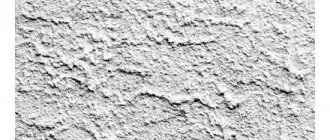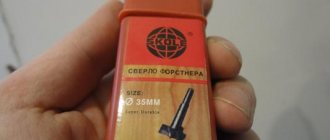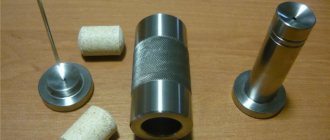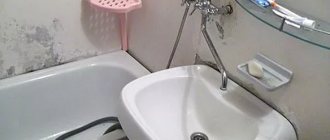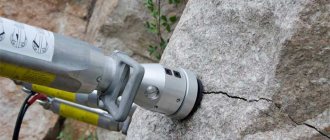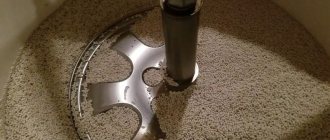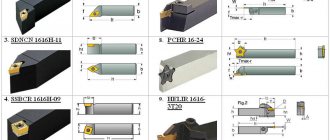Technologies and equipment for tumbling
The tumbling process is carried out on various equipment, for example, tumbling drums and tumbling vibrating machines of various types.
Read also: What is digital transformation?
To carry out the tumbling process, a filler (medium) is required in which the workpieces are processed and the required quality and roughness of the machined surface of the part is ensured.
The filler and parts are set in motion relative to each other in the working capacity of the machine (drum).
Tumbling machines are divided into a large number of types, for example: mechanical and electromagnetic, in turn, mechanical ones are divided according to the type of movement into rotating drums and drums with a vibration drive.
Processing in a tumbling drum (tumbling)
Tumbling metal in Moscow really proves that everything ingenious is simple. To carry out the process, only three components are required: the part itself, abrasive substances for cleaning and a container (drum) in which the cleaning will take place. A wide variety of substances—particles—can serve as fillers (abrasives) for tumbling:
- ceramics,
- wood,
- plastic,
- glass,
- porcelain.
For some types of processing, even the shells of coconuts or walnuts are used. For more complex and effective tumbling methods, for example, for tumbling copper, additional substances can be added to the abrasives. For example, water and the so-called compound. The latter refers to a combination of several chemicals designed not only to clean the metal, but to give it a characteristic gloss. Inhibitors, stearin and coagulants are usually used as components of the compound.
Scope of application of tumbling stones
During the tumbling process, natural stone acquires a smooth surface and a unique shade. This allows it to be used in various fields:
- Jewelry making . Tumbling of precious stones is used for their preliminary processing. The samples are polished until the existing defects are eliminated and the surface becomes perfectly smooth. Quite often, the crystal size is reduced several times compared to the untreated mineral. Subsequently, the master carries out finishing processing of the stones and cutting them.
Amethyst beads tumbling
- Craftsmanship . Tumbling is used to make jewelry, magic items and souvenirs. Stones of various shapes and sizes make beautiful pendants, bracelets, beads, necklaces and keychains. Polished stones are used in lithotherapy for massage manipulations and the treatment of nervous disorders.
Carnelian beads tumbling
- Interior decoration . Many decorative elements are made from tumbling stones, which are subsequently used for interior decoration. Processed natural stone is used to cover floors and walls in the bathroom, lay out mosaics and panels, and line fireplaces and stoves. Polished samples are included in compositions of interior items.
Fireplace tumbled stone
- Construction and finishing works . Galvanized stone is widely used in finishing the facades of buildings, for laying paths and steps. The polished natural mineral has high practical properties and an aesthetic appearance. Typically, slate, rubble, sandstone, marble or granite are used for these purposes.
Galvanized stone on the facade
Stone tumbling at home
It is quite possible to tumble stone with your own hands at home. This can be done either mechanically (for example, with a concrete mixer) or manually. The manual method is more suitable for processing soft minerals, such as jet.
The production volumes of home tumbling are, as a rule, not large. But for finishing the facade of a house, decorating the interior or making pendants and beads, the methods listed below are quite suitable.
Using a concrete mixer
To clean stones from dirt and rough grinding at home, you can use a concrete mixer. To do this, the samples to be processed are placed in a concrete mixer, an abrasive filler or detergent is added to it and turned on at a certain speed. It is advisable to pre-build a cover to cover the drum window.
Do-it-yourself stone tumbling
Stones with a high level of fragility and softness can be processed manually at home. To do this, you will need a container of water, a metal plate measuring 20x10 cm and fine-grained sandpaper.
Sandpaper is wrapped around a metal plate and then dipped in water. Take a stone in your hands and alternately grind all its edges on sandpaper until they acquire a rounded shape. Periodically, sandpaper must be moistened with water.
This processing method is suitable for the manufacture of piece goods: bracelets, pendants, beads, etc. items of jewelry.
5 / 5 ( 5 votes)
Tumbling: features of processing metal products
As a rule, a frequency of 10-50 rpm is used for tumbling in bells, and 20-60 rpm in drums. The drums in which tumbling is carried out have a hexagonal or octagonal shape. Also, such equipment is characterized by the presence of a cover. Sheet steel is used for manufacturing. Increasing the quality of mixing is accompanied by the presence of longitudinal corners inside. This is also achieved by rotating around an inclined axis. Equipment made of steel is lined inside with the following materials:
- plastics;
- rubber;
- tree.
The bell in which tumbling is performed is made of sheet steel 3 mm thick. This equipment uses the following materials to remove defects from the surface of metal products:
- emery;
- quartz sand;
- marble and porcelain battle;
- ceramic prisms.
Drum tumbling, buy tumbling drum
Drum tumbling is intended for cleaning the metal surface from corrosion, rounding edges, removing burrs, and cleaning stamped and cast parts. The parts are removed manually into a container on a pallet. ADDITIONAL. EQUIPMENT
|
| *Control unit with timer is included in the price.. |
| Select and order |
MODEL Nominal drum diameter, mm Working volume, l Power, kW Voltage, V Cost, rub. Internal polyurethane coating
| MAG-2 | 100 | 2 | 0,15 | 220/380 | 20000 | 9000 |
| MAG-6 | 150 | 6 | 0,15 | 25000 | 10000 | |
| MAG-15 | 200 | 15 | 0.25 | 85000 | 12000 | |
| MAG-20 | 225 | 20 | 0,5 | 90000 | 15000 | |
| MAG-27 | 250 | 27 | 0,75 | 95000 | 17000 | |
| MAG-47 | 300 | 47 | 1,1 | 100000 | 18000 | |
| MAG-60 | 325 | 60 | 1,1 | 110000 | 19000 | |
| MAG-74 | 350 | 74 | 1,1 | 150000 | 19500 | |
| MAG-91 | 375 | 91 | 1,5 | 165000 | 21000 | |
| MAG-111 | 400 | 111 | 1,5 | 380 | 175000 | 23500 |
| MAG-217 | 500 | 217 | 1,5 | 190000 | 25000 | |
| MAG-280 | 600 | 280 | 4,0 | 250000 | 27000 | |
| MAG-446 | 700 | 446 | 7,5 | 300000 | 37000 | |
| MAG-665 | 800 | 665 | 11 | 450 000 | ||
| MAG-947 | 900 | 947 | 11 | choose | ||
| MAG-1300 | 1000 | 1300 | 15 | choose |
Order selection of technology and tumbling bodies
Tumbling machine
The Engineering Center produces drum finishing machines of various sizes.
COMMON DATA
Tumbling is designed to clean metal from scale and corrosion, and also allows you to round off sharp edges and remove burrs. Tumbling drums of hexagonal and cylindrical shape are used as equipment. Hexagonal drums provide optimal processing results when finishing various products.
The process of processing parts in a tumbling drum is as follows (see figure): when the drum rotates, the volume of parts in abrasive particles rises to the top, and an avalanche-like working area appears, in which the continuous process of cleaning parts occurs.
By design, tumbling drums can be divided into:
- two-support;
- two-support with an inclined axis;
- console (bell);
- perforated drums for wet finishing;
- special.
Tumbling drums differ in the design of the support units, the fastening of the lid, and the presence or absence of partitions inside. Partitions are used when processing small parts.
When processing heavy, large parts, such as castings, the chamber size is made so that one or two parts fit into the chamber.
When processing hard materials (stone, shot, etc.), small diameter drums are used.
Tumbling drums with an offset axis create complex, intense movement of parts inside the drum, as well as good mixing of them with abrasive material. During one revolution, the speeds of movement of parts are different, processing occurs more intensively and efficiently.
For fine grinding of parts (polishing and superfinishing), perforated tumbling drums operating in a special liquid are used.
Technical description of tumbling machines of the MAG series
Tumbling drums of the MAG series have a special polyurethane coating on the inside, which reduces noise during operation and also extends the service life of the drum.
We install speed controllers on all tumbling drums. The maximum speed of our tumbling machine is 35-45 rpm. The larger the drum diameter, the lower the rotation speed. For example, for a diameter of 500 mm, the rotation speed should be 30-40 rpm, for a diameter of 800 mm no more than 25 rpm.
A free-standing portable control panel increases the ergonomics of finishing equipment and ease of use.
We produce various tumbling drums, which you can buy by filling out an application.
When ordering a drum tumbling machine from us, you can count on high quality tumbling equipment and reliable support throughout its entire service life.
You can buy tumbling in Moscow from us around the clock, leave a request and we will contact you as soon as possible.
Stages of tumbling
The sawn and chipped material extracted from the quarry is sorted and sent to a rubber-lined drum, which looks like a cylinder or polyhedron with jagged edges. In the construction industry, electromagnetic and mechanical installations are used; they are divided into models with a rotating drum or a vibration drive.
Workers add metal balls, pebbles, slag, other abrasives, and water to the container to remove dust and clean (some machines are designed for dry tumbling). The drum closes and the engine begins to oscillate. The speed and duration of the processing cycle is determined by the assigned tasks. The output is tumbled natural stones of the same size, without sharp edges and with a polished surface. In one cycle, a standard installation can process about 200 kg.
Trough tumbling
Tray tumbling is a process of finishing products using a vibrating tray-type tumbling machine. A trough tumbling machine in a simplified form is a rectangular tumbling drum (bath), with an electric motor with a vibration drive attached to the bottom. To operate large tray machines and, accordingly, high power, one electric motor is not enough; in such machines, two motors with a vibration drive are installed for each of them.
The movement of the tumbling filler together with the workpieces in the machine drum during its operation has a circular trajectory relative to the longitudinal axis of the drum. Unlike the trajectory of movement of the filler in the drum of a round-type tumbling machine, in which the abrasive material moves along a circular path that follows the surface of the torus, in tray-type tumbling machines the filler moves along a trajectory that follows the surface of the cylinder.
The main advantage of tray-type finishing machines is the ability to process large-sized, body-shaped and long workpieces. Such workpieces cannot be processed by tumbling in any other machine, and the use of manual processing is much more expensive, and sometimes impossible, due to the shape and dimensions of the workpieces.
The design of a trough tumbling vibrating machine in the form of an elongated bath has one significant drawback compared to a round vibrating machine. In such a machine, it is difficult to remove processed products from the tumbling bath. As a rule, large-sized products are processed in tray-type machines, which allows them to be loaded and removed manually from the tumbling drum.
In some cases, during tumbling of magnetic workpieces, an electromagnetic separator can be used, which will greatly facilitate the separation of products in the tray drum.
When using a tray vibrating machine, there is often a need to process small workpieces; in this case, the best solution for separating the workpieces from the abrasive filler is to use an external vibration separator.
Of course, this significantly increases the cost of the finishing machine, but allows it to be used in a wide range of processed workpieces. Structurally, the filler and workpieces are unloaded through the unloading hole on the side wall of the tray drum. The external vibration separator produced by KROMASH has a reduced height of the receiving tray for convenient use in conjunction with tray vibrating machines.
To integrate a trough tumbling finishing machine into a production line, the KROMASH company can offer another type of trough machines - the so-called. through-type tray machines.
Linear finishing system - LNR (Linear Vibratory Continuous Finishing System) is a vibratory machine that is designed in such a way that during operation the tumbling bodies, together with the products, move from one end of the machine to the other. Processing of workpieces occurs while the workpieces move along the entire working length of the vibrating chute. After the filler passes through the working area, the workpieces being processed along with the abrasive filler enter the separator. After separation at the separator, the tumbling stones are loaded back into the machine using a mini feed conveyor, and the processed products are moved to the next technological operation.
In addition to integrating LNR Linear Finishing Systems into automated continuous cycle lines for the production of small parts, there is another application for such systems - for the processing of long pipe blanks. For detailed information about LNR Linear Finishing Systems, ask our company’s technical specialists.
The KROMAS company produces special trough-type tumbling vibrating machines that will help you cope with the processing of products of any form of complexity, ensure ideal cleaning and contribute to process consistency.
Characteristics of tumbled stone
The main characteristic of stone after tumbling is thickness. It is determined by the thickness of the feedstock, the scope of use, the technology and equipment used. Galvanized stone has a perfectly smooth surface on the front side and therefore does not require finishing polishing. That is, the material is suitable for use after tumbling.
Another characteristic is the tint range. It is determined by the type of mineral and can vary from light pastel colors to dark gray.
Galvanized stone has better properties compared to non-galvanized stone. It is resistant to moisture and sudden temperature changes.
Tumbling of parts
Tumbling of parts
+7
Leave a request, we will calculate everything and contact you!
The tumbling method is selected depending on the volume and size of defects, thickness, shape and size of parts and other surface treatment conditions. Tumbling allows you to clean the surface of metal products, remove using an abrasive method any burrs, traces of corrosion, scale, scratches and other unwanted defects formed after production or during long-term operation. If necessary, long-term polishing can achieve a mirror finish.
Cleaning, processing, grinding, polishing - all these results can be obtained after tumbling the products in a special drum, using abrasive materials (dry and wet). At TorgKoms-Group production, different types of final cleaning are available: drum, vibration, large and fine, rotary, etc.
Tumbling is available for products of different shapes - square, spherical, rectangular, trapezoidal, complex geometry.
- Ceramic
- Plastic
- Organic
To improve the quality of processing, a common method is in which thermoplastic polymer resin (compound) and water are added to the drum.
Technology and abrasives are selected primarily for compatibility with the product material: if it is necessary to maintain maximum identicalness to the original dimensions. Despite all its advantages, tumbling has one significant drawback - the larger the abrasive, the more intense the impact on the part. This parameter is especially important when working with aluminum and other soft materials.
Available for processing - ferrous metal, various types of steel, including stainless and structural, titanium, copper, aluminum and their alloys, types of non-ferrous alloys.
If the requirements for surface quality are not so high or the products initially do not require additional abrasive cleaning, we suggest you consider others for processing rolled metal products:
GALVANIC GALVANIZATION PAINTING
Each type of work contributes to the creation of a reliable protective coating, allowing the parts to also have an aesthetic appearance.
You can order tumbling at our production as a separate service or as a stage of complex metalworking - with a corresponding discount for a full-cycle project. Any clarifications on this proposal will be made by TorgKoms-Group specialists, call! High quality work, bonuses and wide production capabilities for new and regular customers.
Equipment
For tumbling, special tumbling machines are used, which are standardized by GOST 10548-74. The working surface in cross section is a circle or a prism.
- The simplest type of equipment is a tumbling drum. Rotation is carried out using an electric motor, processing occurs due to the free mixing of the abrasive and parts. It is used for simple products, has low processing speed and efficiency, and visual control of the process is not available with this method.
- Vibration equipment - the most common today - is an open bath with an attached vibration drive, which imparts oscillatory movements to it. Abrasive bodies begin to cause micro-impacts on the surface, removing a thin top layer. This type of equipment allows you to simultaneously process large batches of parts.
- Rotary equipment is a fixed drum, in the lower part of which there are rotating blades. Disadvantages include rapid wear of the inner surface of the drum and the inability to process large products. The advantage of this method is the high productivity and quality of the resulting surface.
- Spindle equipment - the part is fixed in the spindle, lowered into a container with abrasive material and begins to rotate. It is possible to carry out slow, unidirectional or any other specific actions. Used in high-tech industries: aircraft manufacturing, medical prosthetics.
Tumbling equipment
Various types of equipment are used in production; each model has certain advantages and disadvantages. Therefore, before choosing a model, it is worth studying its features and characteristics in detail.
Among the most common models for the head of parts are:
- Tumbling drum:
This is the simplest type of equipment, which is a cylindrical drum, less often multifaceted. An electric motor is installed at the base of the drum, causing it to rotate. The drum can be positioned vertically, horizontally or at an angle. It is better when it is possible to change the working angle.
To operate, the required amount of abrasive and workpieces is loaded into the drum. Processing of materials occurs due to the constant movement of workpieces in an abrasive environment during the rotation of the container.
The main advantage of this model is its simplicity and low cost. You can make the drum yourself at home. It is great for household plots and small businesses.
But, given a number of shortcomings, such drums are gradually being phased out and replaced by more advanced models.
The main disadvantages include:
- low speed of work, which negatively affects the efficiency and cost of work;
- there is no separation system, which complicates the process of separating products and finishing bodies;
- most models provide only dry processing; it is almost impossible to implement wet processing in practice;
- In drums, only durable products of simple geometric shape can be processed; processing of thin-walled products from fragile materials or objects of complex shape is ineffective;
- such models do not provide for the possibility of visual control of the processing process while the machine is operating; you need to constantly stop the drum and look for the workpiece in the mixture;
- such equipment does not allow achieving uniform surface treatment, therefore it is more suitable for grinding than polishing;
- the drum creates a lot of noise during operation, sometimes strong vibration, so it cannot be used near residential premises, or the workshop needs to be equipped with additional noise insulation.
Due to a large number of shortcomings, drum equipment today is used only in extreme cases when simple surface treatment is required without achieving high quality, or when the treatment is one-time in nature. For such purposes, sometimes a concrete mixer is used, I slightly re-equip it. A drum like this is perfect for removing casting marks.
- Vibration equipment.
It is this type that replaced the drums and is the most popular today. It is based on a working container of various shapes, which can be in the form of a drum, cube, pipe, bath or other shape. A vibration drive is attached to the container. The tumbling bodies and the processed material are loaded into the container. This model allows the use of water and compound.
The vibration drive is driven by an electric motor, transmitting vibrations to the loaded mixture. The vibration of the abrasive seems small and almost unnoticeable, but such movement allows for high-quality cleaning of the surface due to the rapid and frequent movement of the components relative to each other. The chips apply micro-impacts to the workpiece, which allows you to clean the surface even in the deepest and most difficult areas.
Vibration equipment is constantly being improved, which can significantly increase its efficiency and productivity. Some models include the installation of a mixer, which additionally rotates the working mixture. Today it is easy to choose a model of any size and power. It has practically no disadvantages, and among the advantages are the following:
- versatility, due to the ability to process workpieces of various sizes and shapes, as well as thin-walled objects and fragile raw materials, you just need to replace the finishing bodies, as well as adjust the power and vibration parameters;
- high productivity, which is achieved due to large working tanks made of powerful electric motors; most models also allow simultaneous processing of workpieces of various types with similar physical parameters;
- high speed, significantly exceeding the speed of drum models;
- allows you to process products and soft materials;
- During the work, you can visually control the result; often you can even remove the workpieces without turning off the equipment.
- Rotary equipment.
A simple but quite effective type that is becoming increasingly popular. It is based on a cylindrical container, which is fixedly fixed to the frame. At the base of the container there is a rotating shaft with blades. The working mixture is simply poured into the drum from above. The shaft is then driven by an electric motor, creating centrifugal motion inside the container. To ensure that the mixture moves evenly around the drum and does not get caught on the edges, the walls of the container are specially profiled. This creates a planetary trajectory for the mixture.
Among the disadvantages of rotary equipment are the ability to process only small, light objects, rapid wear of the walls and bottom of the drum, especially at the point where the container and shaft are attached.
The main advantages are:
- the highest productivity among analogues;
- allows you to simultaneously load a large volume of workpieces;
- by changing the shaft rotation speed, you can control the degree of surface roughness of the part with high accuracy;
- the highest quality of processed surface over the entire area of the workpiece;
- Equipment manufacturers often provide the ability to easily add and drain reagents used in the tumbling process.
- Spindle equipment.
A modern type of equipment that is used in rare cases due to its high complexity. At the same time, it shows the highest quality processing result. Therefore, in some cases, spindle equipment becomes indispensable in production.
Unlike other models, the workpieces are not in the free space of the abrasive mixture; they are attached to a spindle, which is rotated. The rotating spindle is slowly lowered into the working container with the abrasive mixture. Thanks to the high spindle speed, the abrasive quickly cleans and polishes the surface of the part. The spindle constantly moves in the mixture so that the abrasive particles replace each other.
The only drawback of this processing is the inability to work with a large number of parts, which is limited by the number of fasteners on the spindle. Most often, such equipment can be found in high-precision mechanical engineering, where special requirements are placed on the surface of parts.
Types of tumbling
Depending on the purposes, several types of tumbling have been developed. Today the following types are distinguished:
- rotary;
- vibration
The essence of rotary tumbling is the interaction of the metal being processed and the abrasive inside a rotating drum. The quality of material processing using this method is quite high, but the speed and efficiency are quite low.
Therefore, the most common is the vibration method. Vibration of the abrasive occurs due to the vibration drive on which the working container is installed. Surface treatment occurs faster and with better quality. The peculiarities of the method make it possible to process workpieces of any size and shape.
Also, depending on the type of filler, tumbling is divided into:
- dry;
- wet.
The dry method involves the use of conventional abrasive filler. The wet method is based on adding water, usually mixed with a coagulant, to the working container. This method is more effective and allows for better cleaning and polishing of the surface. The wet method is indispensable in cases where the workpiece needs to be prepared for the application of enamel or galvanic coating.
There is also a classification based on the type of equipment used:
- drum tumbling;
- planetary tumbling;
- centrifugal tumbling.
Tumbling fillers
The type of filler directly determines the degree of final processing, be it polishing or grinding the material. The filler for tumbling is selected in accordance with certain requirements. First of all, you need to pay attention to the following factors:
- Material type.
Depending on the type of part used, the abrasive is suitable for finishing ceramic, wood, porcelain, plastic, sand, glass or even nut shells.
- Size of material for tumbling. The size must be selected in such a way that the balls can penetrate small holes, recesses and other hard-to-reach places in the part without getting stuck in them.
- Selection of the shape of the abrasive body. The degree and quality of processing depends on the shape of the body. Depending on the goals, a prism shape can be selected, which allows you to qualitatively get rid of burrs, rounding edges and primary grinding, a cone - for polishing and smoothing smooth surfaces, and a ball - for processing products of complex shapes.
- Select an abrasive based on the required abrasive properties. The degree of processing can vary, from primary grinding to remove large cracks and burrs, to polishing to give a smooth, shiny surface. For example, ceramic tumbling fillers are excellent for rough finishing and large layer removal.
Today, the market offers a huge range of abrasive materials, both domestic and imported. It is worth noting that the quality of the filler practically does not vary depending on the manufacturer. Therefore, you don’t have to overpay when purchasing filler. You can only take the manufacturer into account when choosing plastic, since the performance characteristics and service life depend on the quality of the raw materials.
If you plan to use tumbling equipment for home purposes and processing simple metal parts, it is not necessary to purchase factory filler. Depending on the purposes of processing, improvised materials such as pebbles, finely broken glass or the remains of broken ceramic dishes can be used. For small equipment, 10 liters of such filler will be enough, which can be used repeatedly.
With proper operation of tumbling equipment and selection of appropriate filler, high-quality processing of workpieces can be achieved. The efficiency of tumbling significantly exceeds the efficiency of manual processing.
Purpose of metal tumbling
As mentioned above, metal tumbling allows you to remove the following defects from the surface of products:
- sharp edges when stamping sheet metal products;
- burrs formed during cutting of workpieces or turning;
- scale after welding or metal cutting;
- remnants of flash from parts made by casting.
In addition, tumbling effectively polishes products to a mirror-like surface. Parts that have been subjected to tumbling can then be subject to galvanic treatment or painting with powder mixtures.
What metals can be tumbled:
- special purpose alloys;
- black metal;
- structural steel;
- AISI stainless alloys;
- titanium materials;
- aluminum and its alloys;
- copper and copper-based alloys;
- silver products.
Recommendations
Each piece of jewelry is a memory of certain events, and in order to preserve them for many years in a decent form, careful care is required, the features of which can be found in our blog, in the article “The eternal beauty of jewelry - how to preserve it?” Grinding and polishing is an excellent method that will help restore jewelry to its former beauty and radiance, but you should not do this very often, because in the process a layer of material, albeit insignificant, is removed.
In the UvelirMoscow design studio you can not only make magnificent jewelry masterpieces to order, but also repair, grind and polish your precious items.
Galtovka
Tumbling is the grinding or polishing of metal products with abrasive media in a rotary (vibrating) drum to remove dirt, burrs, scale and oxides, and smooth the surface and edges. The efficiency of the process is affected by the abrasive fraction, the ratio of the volume of the parts to be finished to the mass of the grinding mixture, and the rotation speed (vibration frequency) of the container. Tumbling is a finishing treatment included in complex services (cutting, molding, etc.), but you can order it separately. We carry out all work in accordance with current standards.
Regulations
According to GOST 23505-79: tumbling is a waterjet (liquid-abrasive) treatment of workpieces moving together with abrasive particles and liquid in a rotating closed container (drum). Vibro-tumbling (vibro-abrasive processing) - abrasive processing of workpieces with tumbling bodies in a vibrating container. GOST 10548-74 normalizes the parameters of general-purpose cleaning tumbling drums. The working cavity - a circle (or 6-8-sided prism) in cross section - is intended for polishing castings and forgings that are not subject to destruction during tumbling.
Vibrating tumbler
The dry tumbling method is economical and simple: the surface of the part is cleaned completely except for the holes, the mechanical properties of the product do not change, the distortion of linear dimensions for dimensional workpieces is not taken into account, thin forgings require straightening. Vibrating tumbling (dry tumbling) is used for finished forgings processed by cutting during stamping, and intermediate ones - after precision stamping. Shape of processed workpieces: straight or round without small holes and thin sheets weighing up to 50 kg. Tumbling medium: steel balls, sawdust, leather waste, lime.
Water jet finishing
Hydraulic abrasive finishing (wet finishing) is used for streamlined and rectangular workpieces up to 16 kg, not processed by cutting, when the quality of the surface is more important than the geometry of the part: the dimensions during wet finishing are distorted significantly, the edges and edges of the product collapse. Grinding components: liquid (weakly acidic and alkaline solutions of soap or soda in water), tumbling bodies (quartz sand, shot from fired ceramics, granite crushed stone, limestone, basalt, glass).
Purpose of tumbling mixtures
The purpose of tumbling mixtures is different and depends on the size of the abrasive fractions: fine abrasive - for cleaning and polishing thin-walled workpieces, forgings with internal roundings and protruding edges, parts with holes, the shot cross-section is selected to be less than 1/3 of the hole diameter or much larger, ceramic is used for precision polishing abrasive; coarse abrasive - for rough grinding of thick-walled parts and smoothing edges. It is possible to tumble flat parts of simple shapes (circle, square, rectangle, trapezoid, etc.), including holes in the products. Separate approval (in particular, processing of a pilot batch) is required for tumbling parts of complex geometry. There are dimensional restrictions for products. The cost of tumbling services is 10% of the price of the service for cutting parts.
Tumbling machines
| Price, t. rub. | ||
| Tumbling vibrating machines | ||
| 1 | Tray type tumbling vibrating machine 20/15 L. | 75 |
| 2 | Tumbling post 20/15 L. | 95 |
| 3 | Tray type tumbling vibrating machine 50/30 L. | 95-110* |
| 4 | Trough type tumbling vibrating machine 50/30 L. (1 kW, 3000 rpm) | 105 |
| 5 | Tumbling post 50/30 L. | 105-120* |
| 6 | Tumbling station 50/30 L. (1 kW) | 115 |
| 7 | Tumbling station 50/30 L. with rotating separator | 260 |
| 8 | Tray type tumbling vibrating machine 150/120 L. | 195-220* |
| 9 | Trough type tumbling vibrating machine 150/120 L. (1.5 kW) | 210 |
| 10 | Tray-type tumbling vibrating machine 150/120 L. for processing car wheels up to R22 | 270-295* |
| 11 | Tray type tumbling vibrating machine 200/150 L. | 250-270* |
| 12 | Tray-type tumbling vibrating machine 200/150 L. for processing car wheels up to R22 | 325-345* |
| 13 | Programmable control rack for vibrating machines (universal control cabinet) | 40 |
| Tumbling drums | ||
| 1 | Tumbling drum | 150 |
| Optional equipment | ||
| 1 | Working fluid regeneration station for 50 l. (SRRZh50) | 8 |
| 2 | Pump for SRRZh | 2 |
| 2 | Polyurethane partition for GVM150/120 and GVM200/150 | 7 |
| 3 | Partition made of corrosion-resistant steel for GVM50/30 | 4 |
| 4 | Console for processing car rims up to R22 | 75 |
*Equipment prices depend on the configuration.
All equipment is new!
Free delivery of equipment throughout Russia!
Playlist on YouTube: “Processes and results of tumbling.”
Playlist on YouTube: “Equipment”.
Join the VKontakte group: https://vk.com/cnc42
The price depends on the configuration. See more detailed description.
Parts processed on www.CNC42.ru machines from corrosion-resistant steel (stainless steel) grade 12Х18Н10Т (AISI 304, 316, 403)
Mirror finishing of drill bits made of 65G black steel and hard alloy
Tumbling station 50 liters with a rotating drum separator April 2022
Operation of the tumbling station in different modes, unloading of parts, processing results
Tumbling vibrator 50 liters 2022
Vibrator operation in different modes, filler unloading
Tumbling vibrator 150 liters 2022
Vibrator operation in different modes, filler unloading
Tumbling station 50/30 liters (new model 2022)
In the video you will see a general view of the machine, start/stop, frequency adjustment, processing, unloading
Tray type tumbling vibrating machine 200/150 liters
In the video you will see a general view of the machine, start/stop, frequency adjustment, processing, unloading, finished parts
Tray-type tumbling vibrating machine 150/120 liters for processing car wheels up to R22
In the video you will see a general view of the machine, start/stop, frequency adjustment, disk installation, processing
Tray type tumbling vibrating machine 20 liters
In the video you will see a general view of the machine, start/stop, frequency adjustment, processing and unloading, at the end there is a small slide show
Tumbling station 50 l.
Operation of the tumbling station in various modes: processing, separation, unloading
Tumbling vibrator 150 liters
Vibrator operation in different modes, processing of large and small parts for 4 hours, unloading of filler, at the end of the video there are photographs of parts before and after processing
Porcelain ball processing
Vibrator 50/30 l.
Wood processing (wood finishing)
Vibrator 50/30 l.
Process description
The tumbling technology is not difficult to understand: it is based on the same effect of abrasive on the surface layer of the metal, but unlike abrasive discs, bulk abrasive is able to penetrate into any hard-to-reach places of the product, which is a great advantage. Another advantage can be considered the fact that the tumbling processing method does not lead to overheating of the workpiece.
As the drum or centrifuge rotates during the tumbling operation, the abrasive naturally rubs against the surface of the metal parts and scrapes off a thin layer of coating that is invisible to the naked eye. Since this friction occurs constantly, the thickness of the metal is removed, and with it all defects.
The disadvantage of tumbling technology is that the product after processing may not correspond to the original linear dimensions, deformation of the shape occurs, therefore tumbling modes and abrasives must be carefully selected.
In production, there are two main methods of processing metal using this method:
- tumbling in a dry environment;
- tumbling in a damp environment, or wet tumbling.
In the first case, the abrasive consists of different bulk components. This method of metal processing is suitable if you need to carry out finishing or eliminate burrs. The duration of tumbling is determined only by the condition of the product and can reach several days.
In the process of so-called wet tumbling, parts are placed in solutions of different compositions, but essentially this is a mixture of dry abrasive with caustic or soda ash, the soda solution should be two or three percent. It is permissible to use a soap solution.
It should be clarified that the rotation speed of the equipment during tumbling is selected based on the following indicators:
- sizes of metal products, their shapes;
- volume of the working chamber of the equipment;
- the result that needs to be achieved during tumbling processing.
What is tumbling?
Tumbling is the name given to stones of a natural, slightly rounded shape, polished on all sides. Most often, such inserts are used in beads, bracelets and necklaces.
This is one of the few methods of stone processing that is performed automatically: jewelry made from gems processed in this way is the most accessible.
Raw stones of similar size, shape and hardness along with abrasive powder are poured into a metal drum. The whole structure rotates and rattles (sometimes for several days), after which it produces nice polished pebbles. All that remains is to drill holes for the thread - and you can assemble the decoration.
But handmade tumbling is especially valued and most beautiful. The fact is that pebbles rotating in a drum are evenly ground down on all sides, and natural material, as a rule, has rather deep cavities and cracks. As a result, by the time all the defects are sanded away, very little remains of them. Working with each stone individually, the master can “pull out” a much larger volume from a natural pebble of the same size, and, in addition, leave only that part of it that has the most expressive pattern.

